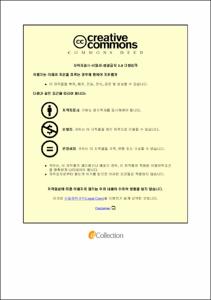교모세포종으로 새롭게 진단받은 환자에서 임상적 요인, 유전체학 정보 및 자기공명영상의학적 소견의 라디오믹스 조합을 이용한 노모그램
- Abstract
- Background: To develop and validate a nomogram combining multiparametric MRI radiomic score and clinical predictors including treatment options for individualized prognostication in patients with IDH-wildtype glioblastoma.
Methods: The prognostication model was developed in 158 patients with IDH-wildtype glioblastoma from March 2012 to November 2016. A total of 6472 radiomic features were extracted from contrast-enhanced T1-weighted imaging, fluid-attenuated inversion recovery, diffusion-weighted imaging, and dynamic susceptibility contrast imaging. After radiomic feature selection using LASSO regression, individualized radiomic score was calculated. The nomogram was built incorporating radiomic score, O6-methylguanine-DNA-methyltransferase (MGMT) gene methylation status, and clinical predictors. The model performance was assessed using the C-index and integrated Brier score (IBS) and calibrated. The model was externally validation in 58 patients with different imaging scheme.
Results: The significant clinical predictors were age, KPS, MGMT methylation status, extent of surgery, history of concurrent concurrent chemoradiation therapy, and history of adjuvant temozolomide use. A radiomic score using 6 selected MR features significantly discriminated overall survival in the training (C-index, 0.691; IBS, 0.169) and the validation set (C-index, 0.617; IBS, 0.196). The combined nomogram significantly improved prognostication compared to the radiomic score (P =.002), or baseline clinical predictors and MGMT (P = .035). The nomogram showed good discrimination in both training (C-index, 0.78; IBS, 0.149) and validation (C-index, 0.68; IBS, 0.158) sets with good calibration.
Conclusions: This glioblastoma nomogram including multiparametric MRI radiomics and treatment options enables individualized prognostication and improves prognostication compared to established clinical models.|연구배경: IDH-wildtype 교포세포종으로 새롭게 진단받은 환자에서 환자의 개인 예후 예측을 위하여 임상적 요인, 유전체학 정보 및 자기공명영상의학적 소견의 라디오믹스 조합을 이용한 노모그램을 개발하고 검증하고자 한다.
연구방법: 2012년 3월부터 2016년 11월까지 IDH-wildtype 교모세포종으로 새롭게 진단받은 158명의 환자에서 예후 예측 모델을 개발하였다. 조영증강 T1 강조 영상, 액체감쇠역전회복 영상, 확산강조 영상 및 관류 영상에서 총 6472개의 라디오믹스 인자들이 추출되었다. Lasso 회귀분석을 통해 인자를 뽑아낸 후 환자 개개인의 라이오믹스 점수를 계산하였다. 환자의 라디오믹스 점수와 O6-methylguanine-DNA-methyltransferase (MGMT) 메틸화 여부 및 임상적 요인을 조합한 노모그램을 만들었다. 모델의 성능은 C-index와 integrated Brier score (IBS)를 통해 측정하였고 이후 보정하였다. 모델은 다른 영상 환경에서 촬영된 58명의 환자를 이용하여 외적 타당도 검증을 거쳤다.
연구결과: 임상적으로 중요한 인자는 환자의 나이, KPS, MGMT 메틸화 여부, 수술의 범위, 동시항암방사선치료 여부 및 추가 temozolomide 치료 여부로 확인되었다. 6개의 자기공명영상 인자를 이용한 라디오믹스 점수는 훈련 집합 (C-index, 0.691; IBS, 0.169)과 검증 집합 (C-index, 0.617; IBS, 0.196) 모두에서 전체 생존율을 유의하게 예측하는 것으로 나타났다. 통합노모그램은 라디오믹스 점수 혹은 임상적인 요인의 이용한 모델보다 환자 예후 관련 유의하게 더 높은 예측력을 보였다. 통합노모그램은 훈련 집합 (C-index, 0.78; IBS, 0.149) 및 검증 집합 (C-index, 0.68; IBS, 0.158) 모두에서 좋은 성능 및 보정도를 보였다.
결론: 교모세포종으로 새롭게 진단받은 환자에서 임상적 요인, 유전체학 정보 및 자기공명영상의학적 소견의 라디오믹스 조합을 이용한 노모그램은 환자의 예후와 관련하여 기존 임상적인 요인을 이용한 모델보다 높은 예측력을 보였다.
- Issued Date
- 2018
- Awarded Date
- 2019-02
- Type
- Dissertation
- Alternative Author(s)
- Minjae Kim
- Affiliation
- 울산대학교
- Department
- 일반대학원 의학과
- Advisor
- 김호성
- Degree
- Master
- Publisher
- 울산대학교 일반대학원 의학과
- Language
- eng
- Rights
- 울산대학교 논문은 저작권에 의해 보호받습니다.
- Appears in Collections:
- Medicine > 1. Theses (Master)
- 파일 목록
-
-
Download
 200000172154.pdf
기타 데이터 / 1.77 MB / Adobe PDF
200000172154.pdf
기타 데이터 / 1.77 MB / Adobe PDF
-
Items in Repository are protected by copyright, with all rights reserved, unless otherwise indicated.